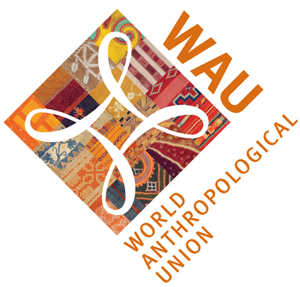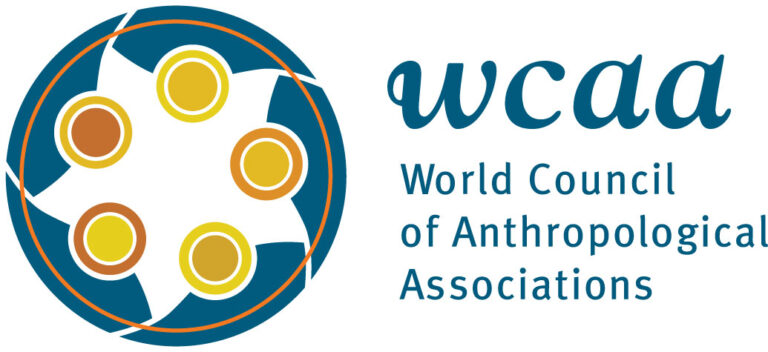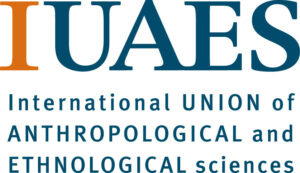
Aistara, Guntra A. 2014. “Actually existing tomatoes: Politics of memory, variety, and empire in Latvian struggles over seeds.” Focaal—Journal of Global and Historical Anthropology 69:12–27
Keywords: Biodiversity, borders, cultural memory, intellectual property rights, seeds, variety
In March 2012, a small farm in Latvia with a collection of over 200 tomato varieties was charged with the illegal sale of seeds not included in the European Union's Common Catalogue. The farm's collection includes traditional Latvian varieties that have never been officially registered, Western varieties imported illegally during the Soviet years, and Russian varieties that came into use during the Soviet years and are now defended by Latvian gardeners as "traditionally grown" and representing the taste of their childhoods. The debate highlighted the continuing struggle over Latvia's geopolitical positioning between Russia and the European Union and control over seeds as a tactic of empire. I explore the cultural memories embedded in the contested tomato seeds and how they contribute to an intertwined imaginary of the Latvian landscape idyll with a Soviet sociality. I argue that the innovative resolution to this conflict represents a process of transculturation in a contact zone between empires (Pratt 1992).

Beer, Bettina, and Julia H. Schroedter. 2014. “Social Reproduction and Ethnic Boundaries: Marriage Patterns Through Time and Space Among the Wampar, Papua New Guinea.” Sociologus 64(1):1–28
Keywords: intermarriage, partner choice, social relations, Papua New Guinea, Wampar
In this article we examine how partner choice and strategies of social reproduction among the Wampar of northeastern Papua New Guinea are implicated in currently pressing questions about the future of Wampar as a socio-cultural unit. We use long-term qualitative and quantitative data based on fieldwork and census surveys conducted between 1954 and 2013 from the village of Gabsongkeg to analyse temporal and spatial patterns of partner choice. We are especially interested in interethnic marriages and their effects on group boundaries and group identities, given a pre-existing pattern of ethnic endogamy. Our results show that intermarriages between Wampar and non-Wampar have constantly been rising; in younger marriage cohorts some 60% of Wampar individuals are intermarried with partners of other ethnic identities. The data reveal that local and historical particularities inflect partner choices in ways that impact on settlement patterns, modes of engagement with the economic institutions of the modern state and, ultimately, the taken-for-granted nature of the identity inhering in the name “Wampar”; these impacts, in turn, increase the likelihood of interethnic marriage and precipitate questions about the rights attaching to local corporate identities under conditions where land is increasingly related to its commodity values.
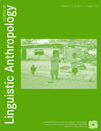
Berman, Elise. 2014. “Negotiating Age: Direct Speech and the Sociolinguistic Production of Childhood in the Marshall Islands.” Journal of Linguistic Anthropology 24(2):109–132
Keywords: Direct speech, childhood, language socialization, language ideologies, Marshall Islands, Oceania
Children in the Republic of the Marshall Islands regularly do a number of things that are inappropriate or even taboo among adults: they walk with food that they do not offer to share; they refuse to give; they directly demand things; and they directly criticize and insult each other. One explanation for their behavior is that they are too developmentally immature to speak in the indirect and polite manner of adults. But I show that, while Marshallese children's apparently direct forms of speech are indeed linked to immaturity, they are linked to immaturity not as a developmental stage but as a social status. Hence, this article reveals, discusses, and challenges two different ideologies of childhood and language: (1) a Western ideology that associates directness with developmental immaturity; and (2) a Marshallese ideology that associates “not hiding”—either words or goods—with being a child. Through their apparently direct forms of speech, children negotiate their relative age and power relationships with each other while simultaneously constructing each other as peers and indexing participants as immature relative to adults. This analysis reveals how age and childhood are produced through speech and considers the implications of this production for understandings of language variation and socialization.
Aolep iien, ajri in Ṃajeḷ rej kōṃṃan men ko me remọ. Rej etetal kōn mōñā, rejjab leḷọk ñan armej, rej kajjitōk aolep kain, im rej ba nan ko enana einwōt ‘kwe tōr’. Jet armej rej ḷōmṇak ajri in Ṃajeḷ kōṃṃan men kein bwe ajri reṇak ta. Ilo beba in, iba ebōd ḷōmṇak eo an rūtto ro. Ajri in Ṃajeḷ rejelā ṃanit. Ak, enana aer ṃanit bwe ilo mour eo an ajri, aikuj kōṃṃan men ko emọ. Ñe rejjab ba nan kein im rejjab kōṃṃan men kein, ajri ro jet reban kautiej er. Meḷeḷe eo, ajri ro rej katak ṃanit eo aer. [kanono, ajri, katak, Ṃajeḷ, ṃanit].

Bloch, Natalia. 2014. “Overheating with Authenticity. Between Familiarity and Otherness in Multisensory Experiencing of India by Tramping Tourists.” LUD 98:181–203
Keywords: Tourism imaginaries, hot and cool authenticity, multisensory experiencing, familiarity – otherness, Orientalism, mobile ethnography, tramping tourism, India
In the article I pose a question to what extent expectations towards the “authentic” experiencing of the Otherness shaped by the tourism industry determine the way tourists perceive it, and to what extent such perception escapes the interpretative schemes imposed by tourism imaginaries. I use the case study of tramping tourism to India – an alternative to the mass tourism, individualized but organized form of collective travelling. Tramping builds its attractiveness on the promise of “real” contact with the people and their culture; it offers the possibility of having a look “at the backstage” of the spectacle staged by the tourism industry. Particularly, it promises to fulfil a need for, as Tom Selwyn named it, “hot authenticity” that can be experienced by multisensory reception of the reality. In other words, tramping promises the tourists that they can be “non-tourists”. However, fueling this need often overwhelms tourists who are used to perceiving the reality through a distancing gaze. While thrown into multisensory-scapes, they cannot handle the surplus of impulses. I call this phenomena “overheating with authenticity in experiencing of Otherness”. It leads to seeking refuge in familiarity and sense of belonging provided by “people like us”, i.e. travel companions, and the culture broker played by a tour guide. Moreover, overheating with authenticity may contribute to reproducing the nature versus culture dichotomy, crucial for Saidian Orientalism, in which the world of senses ascribed to the Other is positioned as subaltern to the restrained, guided by the rational view “the West”. Therefore, I call not only for moving beyond the visualism of Western epistemology by including sensorial experiences into our cognitive spectrum, but also for taking into account other physical sensations present in the tourist contact with Otherness, which usually escape the researchers’ (overvisualised) attention.
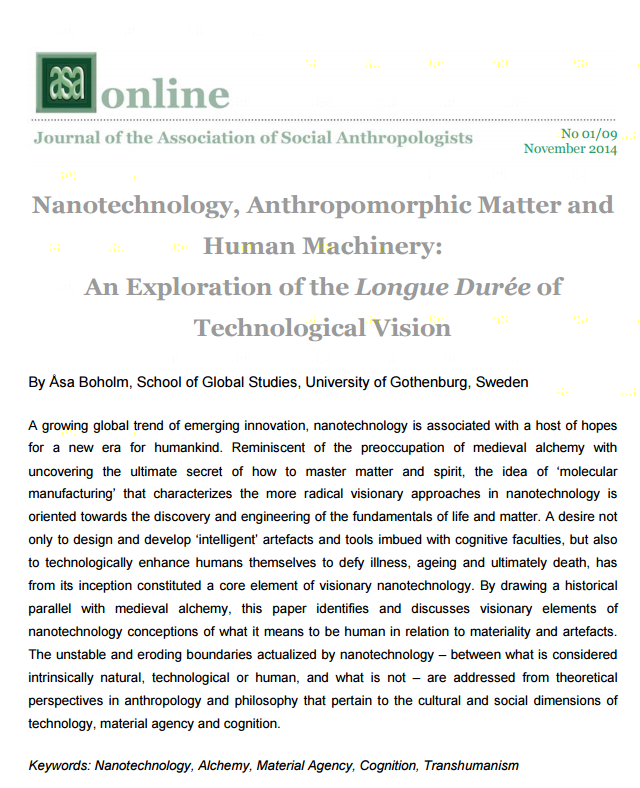
Boholm, Åsa. 2014. “Nanotechnology, Anthropomorphic Matter and Human Machinery: An Exploration of the Longue Durée of Technological Vision.” ASAonline: Journal of the Association of Social Anthropologists 9:1–40.
Keywords: Nanotechnology, Alchemy, Material Agency, Cognition, Transhumanism
A growing global trend of emerging innovation, nanotechnology is associated with a host of hopes for a new era for humankind. Reminiscent of the preoccupation of medieval alchemy with uncovering the ultimate secret of how to master matter and spirit, the idea of ‘molecular manufacturing’ that characterizes the more radical visionary approaches in nanotechnology is oriented towards the discovery and engineering of the fundamentals of life and matter. A desire not only to design and develop ‘intelligent’ artefacts and tools imbued with cognitive faculties, but also to technologically enhance humans themselves to defy illness, ageing and ultimately death, has from its inception constituted a core element of visionary nanotechnology. By drawing a historical parallel with medieval alchemy, this paper identifies and discusses visionary elements of nanotechnology conceptions of what it means to be human in relation to materiality and artefacts. The unstable and eroding boundaries actualized by nanotechnology – between what is considered intrinsically natural, technological or human, and what is not – are addressed from theoretical perspectives in anthropology and philosophy that pertain to the cultural and social dimensions of technology, material agency and cognition.
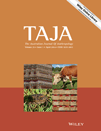
Burbank, Victoria. 2014. “Envy and egalitarianism in Aboriginal Australia: An integrative approach.” The Australian Journal of Anthropology 25(1):1–21.
Keywords: Emotions, cooperation, Aboriginal Australia
A growing global trend of emerging innovation, nanotechnology is associated with a host of hopes for a new era for humankind. Reminiscent of the preoccupation of medieval alchemy with uncovering the ultimate secret of how to master matter and spirit, the idea of ‘molecular manufacturing’ that characterizes the more radical visionary approaches in nanotechnology is oriented towards the discovery and engineering of the fundamentals of life and matter. A desire not only to design and develop ‘intelligent’ artefacts and tools imbued with cognitive faculties, but also to technologically enhance humans themselves to defy illness, ageing and ultimately death, has from its inception constituted a core element of visionary nanotechnology. By drawing a historical parallel with medieval alchemy, this paper identifies and discusses visionary elements of nanotechnology conceptions of what it means to be human in relation to materiality and artefacts. The unstable and eroding boundaries actualized by nanotechnology – between what is considered intrinsically natural, technological or human, and what is not – are addressed from theoretical perspectives in anthropology and philosophy that pertain to the cultural and social dimensions of technology, material agency and cognition.

Calkins, Sandra, and Richard Rottenburg. 2014. “Getting Credit for What You Write? Conventions and Techniques of Citation in German Anthropology.” Zeitschrift für Ethnologie 139(1):99–129.
Keywords: Emotions, cooperation, Aboriginal AustraliaCitations, Originality, Conventions, Science and Technology Studies
Contemporary citing practices do something significant to developments in the sciences and the humanities: they create giants by attributing a scarce academic good – namely originality – to certain authors, while ignoring others. Originality is not a straightforward qualification of a contribution and its impact on academic disputes. Rather it is something that is made and stabilized through citation practices. We contend that the criteria by which authors select from an ocean of possible sources relate to structuring principles that organize the scientific field and various understandings of “what is” a proper publication and “what counts” in publishing scholarly work. The assertion is that these understandings can be identified as conventions of citation, which inform writing and citing practices. Thus far, this seems to be nothing particularly new. However, we bring existing arguments and approaches together to (1) make a first step towards a novel approach to citation analysis and (2) explore several conventions and techniques of citation in German-speaking anthropology after 1965. We show that some citing techniques have solidified more than others and contribute to aporetic debates about German anthropology’s parochialism.
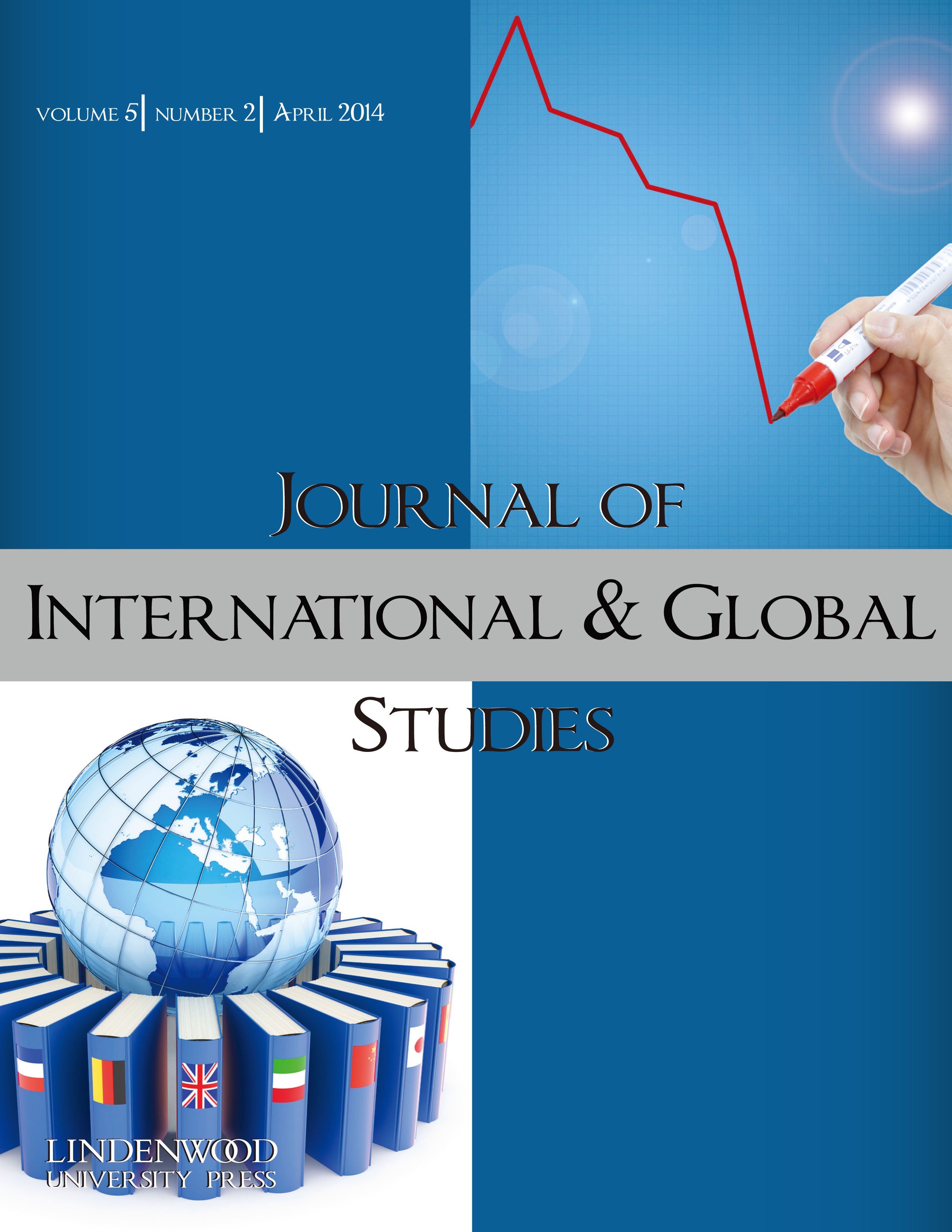
Casey, Conerly. 2014. “States of Emergency”: Armed Youths and Mediations of Islam in Northern Nigeria.” Journal of International and Global Studies 5(2):1–18.
Keywords: Emotions, cooperation, Aboriginal AustraliaCitations, Originality, Conventions, Science and Technology Studies
On November 14, 2013, the U.S. Department of State labeled Boko Haram and a splinter group, Ansaru, operating in northern Nigeria, "foreign terrorist organizations" with links to al-Qa'ida in the Islamic Maghreb (AQIM). This designation is debatable, since the groups are diffuse, with tendencies to split or engage other armed groups into violent actions, primarily focused on Nigerian national and state politics and the implementation of shari'a criminal codes. This essay offers two analytic perspectives on "states of emergency" in Nigeria and the affective, violent forms of "justice" that armed young men employed during the 2000 implementation of shari'a criminal codes in Kano State, important contexts for analyses of militant groups such as Boko Haram or Ansaru. One analysis is meant to capture the expressive aspects of justice, and the other presumes a-priori realms of public experience and understanding that mediate the suffering and the cultural, religious, and political forms of justice Muslim youths draw upon to make sense of their plight. Based on eight years of ethnographic research in northern Nigeria, I suggest the uneasy reliance in Nigeria on secular and religious legalism as well as on extrajudicial violence to assure "justice" (re)enacts real-virtual experiences of authorized violence as "justice" in Nigeria's heavily mediated publics.
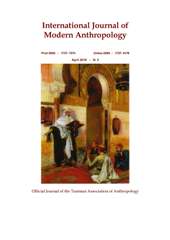
Chaabani, Hassen. 2014. “Recent out of Yemen: new version of the theory of unique and recent origin of modern man.” International Journal of Modern Anthropology 1(7):13–42.
Keywords: Human evolutionary history, Origin of modern humans, Recent out of Yemen thesis, Date of modern man emergence, Place of modern man emergence, Genus Homo definition, Modern man definition, Single origin theory
It is generally accepted that the human evolutionary history was started in sub-Saharan Africa by the emergence of first individuals belonging to our genus Homo. But details of this evolution, particularly those of its last stage relating to the modern man (Homo sapiens sapiens) emergence, represent until now a controversial topic. Confusion and imprecision associated with certain concepts and definitions have accentuated this controversy and therefore helped to curb the progress of the research in this topic. In this paper I present these problems before presenting a new detailed version of the theory of unique and recent origin of modern man. This version designated “Recent out of Yemen” thesis represents a refined grand synthesis in which my advanced hypotheses are brought together with new additional details. First, from an objective definition of modern man and several solid anthropological arguments I have proposed dates, of about 45,000 years ago for the emergence of our species and 20,000 years ago for that of our subspecies. Second, from analyses of basic genetic results I have shown that the southern Arabian Peninsula would be the most probable place of a so recent emergence of modern man. The various elements of my thesis are presented and discussed following an empirical approach, and then summarized in a scenario that represents a new more consistent image of our evolutionary history.
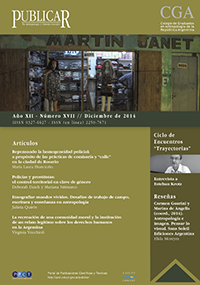
Daich, Deborah, and Mariana Sirimarco. 2014. “Policías y Prostitutas: El Control Territorial En Clave De Género.” PUBLICAR 17:27–45.
Palabras clave: Policía, prostitución, control policial, género
En la Argentina, el ejercicio de la prostitución a título personal no es un hecho ilegal, aunque sí objeto de control policial, al estar perseguido por normativas que penalizan la oferta y demanda ostensible de sexo en la vía pública. Este artículo se propone indagar en el entramado de sociabilidad que se construye en la interacción cotidiana entre policías-prostitutas, rescatando las relaciones (de sometimiento, resistencia, negociación y hasta de cercanía) puestas en juego en el ejercicio efectivo de dicho control. Sostendremos que, al interior de dichas interacciones, el género aparece como un insumo que permite no sólo construir identidades individuales y colectivas, sino como una herramienta que permite estructurar diversas modalidades de relacionamiento.
Although autonomous prostitution is not considered a crime in Argentina, it is yet the object of police control, due to the regulations that punish the supply and demand of sex in public areas. This paper intends to analyze the framework of sociability formed by the daily interaction between policemen-prostitutes, focusing on the relationships (of submission, resistance, negotiation and even closeness) implied in the performance of police control. We will argue that gender not only mould those relationships shaping collective and individual identities, but also organizes different modes of relation.
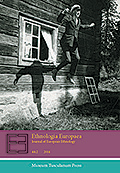
Tine Damsholt and Astrid Pernille Jespersen. 2014. Innovation, Resistance or Tinkering. Rearticulating Everyday Life in an Ethnological Perspective. In: Sandberg, Marie (ed.): 'European Ethnology Revisited', Special Issue of Ethnologia Europaea – Journal of European Ethnology, 44:2, pp. 17-30. Copenhagen: Museum Tusculanum Press, http://www.mtp.hum.ku.dk/tidsskrift.asp?teln=900008.
Keywords: Everyday life practices, user-driven innovation, tinkering, resistance
In this paper, we investigate the background and history that ethnologists bring to bear on interdisciplinary innovation projects. We argue that although ethnology is well-equipped to contribute to innovation projects, our discipline also builds upon a series of conceptual configurations, and that these classic ethnological concepts and “taken for granted” understandings sit oddly with contemporary ideas about innovation as expressed in recent Danish innovation policy. These reflections were prompted by our participation in a joint innovation project funded by a Danish programme for user-driven innovation. By revisiting the discipline of ethnology as it has been conducted in southern Scandinavia, we identify three key points that explain our concerns regarding the way in which everyday life was analysed and configured in the innovation project.
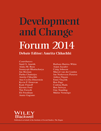
Donovan, Kevin P. 2014. “‘Development’ as if We Have Never Been Modern: Fragments of a Latourian Development Studies.” Development and Change 45(5):869–894.
The work of the French anthropologist-cum-philosopher Bruno Latour has influenced a wide variety of disciplines in the past three decades. Yet, Latour has had little noticeable effect within development studies, including those sub-fields where it might be reasonable to expect affinity, such as the anthropology of development. The first half of this article outlines some core aspects of Latour's oeuvre as they relate to development and anthropology, particularly focusing on the post-development critique. Latour's approach to constructivism and translation, his analytical commitment to ‘keeping the social flat’ and his distribution of agency offer novel ways of maintaining some of the strengths of post-development without falling prey to some of its weaknesses. The second half of the article explores the potential for a Latour-inspired theory of development that may provide fruitful avenues for scholarship and practice beyond post-development, emphasizing materialism, relationality and hybridity.
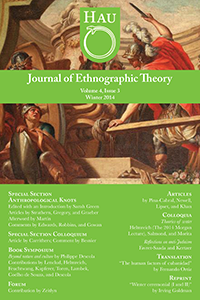
Graeber, David. 2014. “Anthropology and the rise of the professional-managerial class.” Hau: Journal of Ethnographic Theory 4(3):73–88.
Keywords: Class composition, reflexivity, audit culture, prefigurative politics
Many of the internal changes within anthropology as a discipline—particularly the "postmodern turn" of the 1980s—can only be understood in the context of broader changes in the class composition of the societies in which university departments exist, and, in particular, the role of the university in the reproduction of a professional-managerial class that has come to displace any working-class elements in what pass for mainstream "left" political parties. Reflexivity, and what I call "vulgar Foucauldianism," while dressed up as activism, seem instead to represent above all the consciousness of this class. In its place, the essay proposes a politics combining support for social movements and a prefigurative politics in the academic sphere.
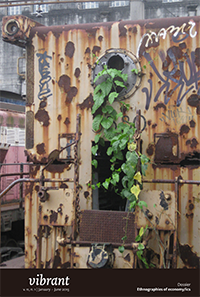
Guedes, André Dumans. 2014. “Fevers, Movements, Passions and Dead Cities in Northern Goiás.” Vibrant 11(1):56–95.
Keywords: Popular economies, development, movements, economic fever, dams, gold mining
Palavras Chave: Economias populares, desenvolvimento, movimentos, febres econômicas, barragens, garimpo
In this paper I show how people living in a small town in the Brazilian state of Goiás describe the "economic" processes that have been shaping and transforming their lives over recent decades: the gold fever in the 1980"s, the construction of three large hydroelectric plants and the complex relation between this city and the mining company that "created" it. In so doing, I focus on the ideas of movement, passion and fever, looking to demonstrate how such categories relate these processes to other experiences and domains. In pursuing this aim, I also look to establish a counterpoint to the ways through which issues such as the social effects of large development projects or the modernization of "traditional" areas have usually been described in the social sciences.
Neste artigo, mostro como os habitantes de uma pequena cidade localizada no estado brasileiro de Goiás descrevem os processos “econômicos” que vêm moldando e transformando suas vidas ao longo das últimas décadas: a febre do ouro dos anos 1980, a construção de três usinas hidrelétricas e a complexa relação existente entre a cidade e a mineradora que “criou” esta última. Para tanto, eu foco aqui nas ideias de movimento, paixão e febre, buscando mostrar como tais categorias relacionam tais processos a outras experiências e domínios. Dado este objetivo, busca também estabelecer um contraponto às maneiras através das quais são descritos, nas ciências sociais, tópicos como os efeitos sociais de grandes projetos de desenvolvimento ou a modernização de áreas “tradicionais”.
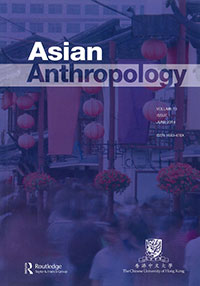
Haas, Paula. 2014. “Contradictory moralities: alcohol consumption in Inner Mongolia.” Asian Anthropology 13(1):20–35.
Keywords: Mongolia, China, alcohol, morality, uncertainty
Alcohol consumption is a central aspect of social life among Mongols in Mongolia and Buryatia as well as in Inner Mongolia. Despite its prominence, however, it has not yet been addressed as a phenomenon deserving anthropological attention in its own right. Drawing on material collected in Inner Mongolia (PR China), this article tries to fill this ethnographic gap by describing the deeply contradictory moral values associated with alcohol as well as the social and affective dynamics generated by the ambivalent role of drinking in the construction of a moral self. It thereby draws attention to the inherent contradictions in local systems of moral values and their anxiogenic impact on social interaction, particularly in rural settlements. At the same time, it provides a new perspective on old topics within the anthropology of Mongolia, such as notions of morality, the maintenance of a rigid social hierarchy, and uncertainty.
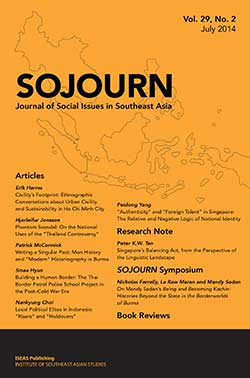
Jonsson, Hjorleifur. 2014. “Phantom Scandal: On the National Uses of the “Thailand Controversy”.” Sojourn: Journal of Social Issues in Southeast Asia 29(2):263–299.
Keywords: Anthropology, Thailand, United States, Mien, Thailand Controversy
The episode known as the “Thailand Controversy” centred on claims that, during the Vietnam War, American anthropologists in Thailand had been collaborating with U.S. and Thai military interests and in ways that harmed social life and efforts towards equality and justice in that country. Reflection and comparison suggest that the allegations of impropriety allowed for emotional identification and understanding in terms of outrage, and that this dynamic is common in the context of anxieties over the transgression of ethnic boundaries. The case is compared with an episode of fears of witchcraft involving the Mien of northern Laos, when an ethnic militia took charge of spiritually and militarily guarding the ethnic boundary. Examination of how the anthropological crisis involving Thailand played out suggests various national differences in the academic discipline, in the United States, Australia, Austria and Thailand. The facts of the case are strongly connected to emotional identification, to a divide in the United States between theoretical and applied anthropology, and to responses to decades of political suppression in the United States.

Kamat, Vinay R. 2014. ““The Ocean is our Farm”: Marine Conservation, Food Insecurity, and Social Suffering in Southeastern Tanzania.” Human Organization 73(3):289–298.
Keywords: Tanzania, marine conservation, food insecurity, structural violence, social suffering
This paper examines the social impact of a large-scale marine conservation project (Marine Park) in the coastal region of Mtwara, southeastern Tanzania, following displacement and the enforcement of restrictions on fishing and extracting marine resources. Through an analysis of interviews and focus group discussions with residents in six villages, the paper illustrates how the undesired effects of the Marine Park have become part of people's everyday discourse regarding hardships and their experiences of the violence of everyday life. Elicited narratives provide insights into how the Marine Park, in combination with a multiplicity of factors leading to displacement, dispossession, and social dislocation, has intensified hardships, especially among female-headed households, due to their increasing poverty, marginalization, and food-related insecurity. The narratives shed light on people's lived experiences of disempowerment, feelings of humiliation, anger, despair, low self-esteem, and extreme resentment—in essence, their social suffering. The paper makes a case for addressing the human dimensions of marine biodiversity and conservation interventions as a key step in making them genuinely collaborative and sustainable in terms of social equity and ecological effectiveness.
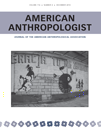
Kent, Michael, Ricardo Ventura Santos, and Peter Wade. 2014. “Negotiating Imagined Genetic Communities: Unity and Diversity in Brazilian Science and Society.” American Anthropologist 116(4):36–748.
Keywords: Genetics, imagined communities, Brazil, identity politics
Palabras clave: genética, comunidades imaginadas, Brasil, políticas de la identidad
In this article, we explore the ways in which genetic research reconfigures historically rooted debates on race and national identity by analyzing the intense debates that have taken place in the past decade in Brazil around the genetic profile of the nation’s population. Such debates have not only featured a significant variety of interpretations by different geneticists but also involved the media, policy makers, and social movements. Here we focus in particular on the ways in which genetic knowledge and the arguments it makes possible have reproduced, contested, or transformed pre existing narratives about race and national identity in Brazil. A central underlying tension in these debates is that between unity and diversity—between views that consider the Brazilian population as a single unit that cannot be differentiated except at the individual level and alternative interpretations that emphasize the multiplicity of its populations in terms of race, region, and genetic ancestry.
En este artículo, exploramos las formas en que la investigación genética reconfigura los debates históricamente arraigados sobre la raza y la identidad nacional, mediante el análisis de los intensos debates que han tenido lugar en la última década en Brasil alrededor del perfil genético de la población del país. Estos debates no sólo han contado con la importante variedad de diferentes interpretaciones por los genetistas, sino también han involucrado los medios de comunicación, los políticos y los movimientos sociales. Aquí nos centramos en particular sobre las formas en que el conocimiento genético, y los argumentos que él facilita, han reproducido, impugnado, o transformado narrativas preexistentes acerca de la raza y la identidad nacional en Brasil. La tensión central que subyace en estos debates es la entre la unidad y la diversidad—entre abordajes que consideran la población brasileña como una sola unidad que no puede ser diferenciada, excepto al nivel individual, y las interpretaciones alternas que hacen hincapié en la multiplicidad de sus poblaciones en términos de raza, región, y ascendencia genética.

Kyed, Helene Maria. 2014. “State Policing and Invisible Forces in Mozambique.” Africa 84(3):424–443.
In this article, we explore the ways in which genetic research reconfigures historically rooted debates on race and national identity by analyzing the intense debates that have taken place in the past decade in Brazil around the genetic profile of the nation’s population. Such debates have not only featured a significant variety of interpretations by different geneticists but also involved the media, policy makers, and social movements. Here we focus in particular on the ways in which genetic knowledge and the arguments it makes possible have reproduced, contested, or transformed pre existing narratives about race and national identity in Brazil. A central underlying tension in these debates is that between unity and diversity—between views that consider the Brazilian population as a single unit that cannot be differentiated except at the individual level and alternative interpretations that emphasize the multiplicity of its populations in terms of race, region, and genetic ancestry.
Cet article explore la manière dont la police d’État au Mozambique a tenté de faire une (nouvelle) incursion dans une ancienne zone de combat et, plus généralement, les implications de ce mode d'action pour l'autorité de l'État. Les efforts de réforme engagés après guerre pour professionnaliser la police dans le respect de l'autorité de la loi et des droits humains ont apparemment eu des résultats paradoxaux. Ceci tient en partie au fait que les efforts de constituer une autorité d’État se sont fondés sur l'acceptation et la maîtrise de la « tradition » comme domaine alternatif de l'autorité, de l'ordre et de la loi. Des travaux ethnographiques menés dans les commissariats de police montrent que la police traite un nombre croissant de cas de sorcellerie et de problèmes spirituels. L'article soutient que ceci ne reflète pas seulement une tension entre les notions locales/coutumières et étatiques/légales de l'ordre et de la justice. L'existence de souverainetés partielles est tout aussi importante. Un idiome spirituel du pouvoir et du mal constitue une articulation alternative de la souveraineté due à la capacité de forces invisibles à donner et à ôter la vie. C'est un idiome que maîtrisent les chefs et les guérisseurs. Les policiers invoquent des forces invisibles pour gagner une popularité populaire et manifester le pouvoir de l'État, sans pour autant parvenir à pleinement maîtriser ces forces. En conséquence, l'autorité de la police d’État demeure incertaine et a constamment besoin d’être renforcée en édictant des hiérarchies et des frontières juridictionnelles, et en usant de la force.

Liep, John. 2014. “The Trobriandization of the Western World: Bronislaw Malinowski and the Sexual Revolution.” Suomen Antropologi: Journal of the Finnish Anthropological Society 39(4):5–19.
Keywords: Malinowski, Trobrianders, Wilhelm Reich, Sexual revolution
This essay explores the wider cultural impact of Malinowski’s reports on Trobriand sexual life and society in Britain and Denmark. Through his writings and lectures the Trobrianders became a ‘byword among novelists andsocial reformers (…) the Twentieth-Century Noble Savage’ (Meyer Fortes). Malinowski’s voice was a part of the discourse of ‘the New Generation’ of sexual libertarians in Britain and America. This was the First ‘Sexual Revolution’ ofthe 1920s and 30s. In the second part of the essay I follow a link to Denmark where the Trobriand model case was introduced into a milieu of ‘culture liberals’ by the psychoanalyst Wilhelm Reich in the mid-thirties. In the Second Cultural Revolution of the 1960s and 70s culture liberals and their ideas became dominant and victorious in Danish educational and sexual reforms. In an epilogue I follow this legacy of free love back to the Trobriand Islands with a Danish filmmaker, Jorgen Leth, in the 1980s.
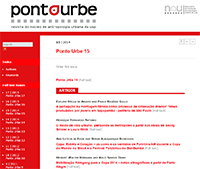
Magnani, José Guilherme Cantor. 2014. “O Circuito: proposta de delimitação da categoria.” PONTO URBE 15:1‒13. DOI : 10.4000/pontourbe.2047.
Palabras claves: Antropologia urbana, método etnográfico, circuito, ciudades amazónicas
Circuito faz parte de uma “família de categorias” que inclui pedaço, mancha, trajeto e pórtico, desenvolvida ao longo de pesquisas realizadas pelo Núcleo de Antropóloga Urbana – NAU/USP. O contexto a partir do qual tais categorias surgiram e ao qual sempre foram aplicadas é o das grandes metrópoles, buscando descrever, por meio do método etnográfico, sua dinâmica e as regularidades dos arranjos de seus moradores em seu cotidiano. No entanto, recentes incursões a campo, entre as quais se destacam pesquisas em cidades da região amazônica, com marcada presença indígena, colocaram a possiblidade de rever essa categoria, principalmente pela introdução da variável “tempo”, uma vez que a formulação original privilegiava seu caráter espacial.
Circuito es parte de una “família de categorias” que incluye pedaço, mancha, trayecto y pórtico, desarrolada a lo largo de investigaciones realizadas por el Núcleo de Antropóloga Urbana – NAU/USP. El contexto a partir de cuál dichas categorías surgieron y al cuál siempre fueron aplicadas es él de las grandes metrópolis, intentando describir, con base en el método etnográfico, su dinámica y las regularidades de los arreglos de sus moradores en su cotidiano. Sin embargo, recientes incursiones a campo, entre las cuáles se destacan investigaciones en ciudades de la región amazónica, con marcada presencia indígena, plantearon la posibilidad de rever esa categoría, principalmente por la introducción de la variable “tiempo”, una vez que a formulación original privilegiaba su carácter espacial.
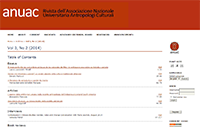
Maher, Vanessa. 2014. “Contemporary Chinese Studies: Gender, Voice and Change Conversation with Maria Jaschok, August 2014.” Anuac 3(2):97–117.
This interview is partly an intellectual biography of Maria Jaschok, a renowned scholar of contemporary China, partly a rare account of the changes in Western approaches to the study of China over the past fifty years. It also touches on relationships of mentoring and collaboration among scholars and in the field. Prominent themes are the history of gender studies, the question of “muted groups” and “voice” and the valuable international networks established since the Seventies by the Oxford Centre for Cross-Cultural Research on Women, comprising anthropologists who later founded the International Gender Studies Centre, of which Maria Jaschok has been Director since 2000. The Centre has been based at Lady Margaret Hall, University of Oxford, since 2011.
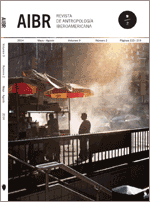
Martos, Juan Antonio Flores. 2014. “Iconografías emergentes y muertes patrimonializadas en América Latina: Santa muerte, muertos milagrosos y muertos adoptados (Emerging Iconographies and Patrimonized Deaths in Latin America: Holy Dead, Miraculous Dead and Adopted Dead).” Revista de Antropología Iberoamericana 9(2):115–140.
Cultural heritage, emerging cults, violence, Holy Death, miraculous dead
Palabras clave: Patrimonio cultural, cultos emergentes, violencias, Santa Muerte, muertos milagrosos
Ethnographically, I explore imaginaries in Latin American societies where death has a role and relevant agency; as well as its connection to some figures and emerging cults that claim to embody death as a self possession and heritage. From the Santa Muerte in Mexico, I will make a comparison to the processes of cultural patrimonialization of the death in other American societies. I focus the manufacture of miraculous dead―folk saints― in cemeteries, and the processes of “adoption” of Colombia’s violence victims of unknown dead citizens―called dead NNs―. These emerging cults connected with the experience of its practitioners to take control of their lives in a precarious state of social vulnerability, homeless state institutions and formal structures. These are considered as “walking dead” who enjoy a very good health.
Exploro etnográficamente unos imaginarios en sociedades latinoamericanas donde la muerte tiene un protagonismo y agencia relevante y su conexión con unas figuras y cultos emergentes que pretenden encarnarla como un bien y patrimonio propio. A partir de la Santa Muerte en México, se establece un contraste comparativo con los procesos de patrimonialización cultural de la muerte en otras sociedades americanas: manufactura de muertos milagrosos –santos populares– en cementerios, y procesos de elección y de «adopci��n» de muertos anónimos víctimas de la violencia en Colombia –los llamados muertos NN–. Estos cultos emergentes se conectan con la experiencia de sus practicantes de tomar el control de sus vidas en un precario estado de vulnerabilidad social, desamparados de instituciones estatales y estructuras oficiales. Unos «muertos vivientes» que disfrutan de buena salud.
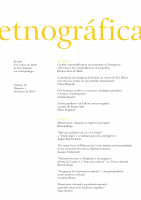
Matos, Patrícia Alves de. 2014. “Gender commodification and precarity in Portuguese call centres: the (re)production of inequality (Mercantilização do genéro e precariedade no sector português dos call-centers:a (re)produção da desigualdade).” Etnográfica 18(1):5–32.
Keywords: Call centres, immateriality, gender, precarity, Portugal, valued/hegemonicmasculinity
Palavras-chave: Centros de atendimento telefónico, imaterialidade, género, precariedade, Portugal, masculinidade valorizada/hegemonic
In this article I examine the extent to which gender is a commodity in the Portuguese call centre regime of value creation; and how gendered products of labour are embedded in both historical local gender idioms and neoliberal trends associated with recent class and employment restructurings of the European economy (precarity). Despite the existence of some formal academic studies and various activist essays in web-based journals focusing on the gendered nature of precarious work, the empirical analysis and theoretical articulation of immaterial labour regimes of value creation, precarity and gender relations remains underdeveloped. This omission in the available literature greatly contributes to an implicit acceptance of immateriality and precarity as gender-neutral realms, an assumption which, as I show in this article, may lead to faulty understandings regarding contextual specificities in the constitution of gendered neoliberal subjectivities and inequalities.
No contexto do regime de criação de valor no sector português dos centros de atendimento telefónico, analisa-se o género como mercadoria, tendo em conta o modo como os produtos de trabalho “genderizados” (gendered) estão imbricados em idiomas locais (históricos) de género e em transformações socioeconómicas de cunho neoliberal, associadas à recente reconfiguração das classes sociais e do emprego no contexto da economia europeia (precariedade). Apesar da circulação de alguns estudos académicos – e ensaios publicados por ativistas em revistas eletrónicas – sobre genéro e trabalho precário, é escassa a análise empírica e articulação teórica entre regimes laborais imateriais de criação de valor, precariedade e relações de género. Esta omissão na literature científica disponível contribui para a aceitação implícita da imaterialidade e da precariedade enquanto esferas neutras no que diz respeito ao género. Pretende-se demonstrar como tal pressuposto pode conduzir a uma compreensão equívoca das especificidades contextuais da constituição de subjetividades relacionadas com o género e de desigualdades produzidas por discursos e práticas cujos fundamentos radicam na ideologia neoliberal.

Menezes Bastos, Rafael José de. 2014. “Ensaio sobre Adoniran: um estudo antropológico sobre a Saudosa maloca (Essay on adoniran: an anthropological study about saudosa maloca / Essai sur adoniran: une étude anthropologique sur la chanson saudosa maloca).” Revista Brasileira de Ciências Sociais 29(84):25–41.
Keywords: Adoniran Barbosa, Anthropology of music, Arrangement, Version, Interpretation
Palavras-chave: Adoniran Barbosa, Antropologia da música, Arranjo, Versão, Interpretação
Mots clés: Adoniran Barbosa; Anthropologie de la musique; Arrangements; Version; Interprétation.
This article analyzes from two perspectives Adoniran Barbosa's samba "Saudosa maloca": the first version (1951), arranged by Nelson Miranda, and the version arranged by the group Demônios da Garoa (1955), which transformed the samba into a great success. The lyrics of the song describe a dramatic encounter between a homeless and the real state's establishment in the Sao Paulo of the 1950's, a moment characterized by economic overoptimism, the reinvention of paulistanidade, and the commemorations of the IV Centennial of the city of Sao Paulo. The first arrangement is marked by a feeling of sadness and pain, with a musicality alluding to lamentation and resignation. The second, on the contrary, is characterized by certain jocosity and disdain, with a musicality of derision. The study seeks to reconstruct the native models of song comprehension, with special attention to the issues of arrangements and ways of singing and playing.
Este artigo analisa o samba "Saudosa maloca", de Adoniran Barbosa, a partir de dois ângulos: primeira versão (de 1951), com arranjo de Nelson Miranda, e a versão arranjada pelo grupo Demônios da Garoa (de 1955), que transformou o samba num sucesso. A letra da canção narra um encontro dramático entre um sem-teto e o establishment imobiliário na São Paulo dos 1950, caracterizados pelo ufanismo econômico, pela reinvenção da paulistanidade e pelas comemorações do IV Centenário da cidade. O primeiro arranjo é marcado por um sentimento de tristeza e dor, com uma musicalidade que remete à lamentação e à resignação. O segundo, ao contrário, é marcado por certa jocosidade e desdém, com uma musicalidade que se reporta ao escárnio. O estudo busca reconstituir os modelos nativos de compreensão da canção, com especial atenção às problemáticas do arranjo e das maneiras de cantar e tocar.
Cet article analyse la samba "Saudosa maloca", d'Adoniran Barbosa, à partir de deux angles: la première version (de 1951), avec les arrangements de Nelson Miranda, et la version (de 1955) arrangée par le groupe Demônios da Garoa, qui a transformé la samba en un succès. Les paroles de la chanson racontent l'histoire de la rencontre dramatique entre un sans-domicile et l'establishment immobilier dans la ville de São Paulo des années 1950, marqué par le chauvinisme économique, la réinvention du caractère pauliste et par les festivités du IVe Centenaire de la ville. Le premier arrangement est marqué par un sentiment de tristesse et de douleur, avec une musicalité qui renvoie à la lamentation et à la résignation. Le second, au contraire, est marqué par une certaine ironie et dédain, avec une musicalité qui se rapporte au mépris. L'étude tente de reconstituer les modèles natifs de compréhension de la chanson, avec une attention particulière aux problématiques de l'arrangement et des manières de chanter et de jouer.

Morley, Iain. 2014. “A multi-disciplinary approach to the origins of music: perspectives from anthropology, archaeology, cognition and behavior.” Journal of Anthropological Sciences 92:144–177.
Keywords: Vocalisation, Sociality, Entrainment, Hominin, Human Evolution, Palaeoanthropology, Palaeolithic, Hunter-gatherer
Archaeological evidence for musical activities pre-dates even the earliest-known cave art and it remains the case that no human culture has yet been encountered that does not practise some recognisably musical activity. Yet the human abilities to make and appreciate music have been described as “amongst the most mysterious with which [we are] endowed” (Charles Darwin, 1872) and music itself as “the supreme mystery of the science of man” (Claude Levi-Strauss, 1970). Like language, music has been the subject of keen investigation across a great diversity of fields, from neuroscience and psychology, to ethnography, to studies of its structures in its own dedicated field, musicology; unlike the evolution of human language abilities, it is only recently that the origins of musical capacities have begun to receive dedicated attention. It is increasingly clear that human musical abilities are fundamentally related to other important human abilities, yet much remains mysterious about this ubiquitous human phenomenon, not least its prehistoric origins. It is evident that no single field of investigation can address the wide range of issues relevant to answering the question of music’s origins. This review brings together evidence from a wide range of anthropological and human sciences, including palaeoanthropology, archaeology, neuroscience, primatology and developmental psychology, in an attempt to elucidate the nature of the foundations of music, how they have evolved, and how they are related to capabilities underlying other important human behaviours. It is proposed that at their most fundamental level musical behaviours (including both vocalisation and dance) are forms of deliberate metrically-organised gesture, and constitute a specialised use of systems dedicated to the expression and comprehension of social and emotional information between individuals. The abilities underlying these behaviours are selectively advantageous themselves; in addition, various mechanisms by which the practice of musical activities themselves could be advantageous are outlined.
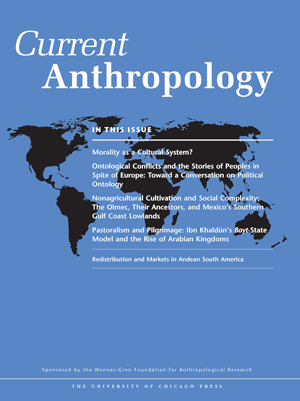
Orlove, Ben, Heather Lazrus, Grete K. Hovelsrud, and Alessandra Giannini. 2014. “Recognitions and Responsibilities: On the Origins and Consequences of the Uneven Attention to Climate Change around the World.” Current Anthropology 55(3):249–275.
Though climate change is a global process, current discussions emphasize its local impacts. A review of media representations, public opinion polls, international organization documents, and scientific reports shows that global attention to climate change is distributed unevenly, with the impacts of climate change seen as an urgent concern in some places and less pressing in others. This uneven attention, or specificity, is linked to issues of selectivity (the inclusion of some cases and exclusion of others), historicity (the long temporal depth of the pathways to inclusion or exclusion), and consequentiality (the effects of this specificity on claims of responsibility for climate change). These issues are explored through a historical examination of four cases—two (the Arctic, low-lying islands) strongly engaged with climate change frameworks, and two (mountains, deserts) closely associated with other frameworks of sustainable development rather than climate change. For all four regions, the 1960s and 1970s were a key period of initial involvement with environmental issues; the organizations and frameworks that developed at that time shaped the engagement with climate change issues. In turn, the association of climate change with a few remote areas influences climate change institutions and discourses at a global scale.
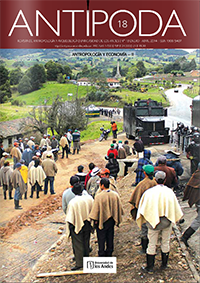
Ramírez, María Clemencia. 2014. “Legitimidad, complicidad y conspiración: la emergencia de una nueva forma económica en los márgenes del Estado en Colombia Antípoda (Legitimacy, complicity and conspiracy: the emergence of a new economic form on the margins of the Colombian State / Legitinidade, cumplicidade, e conspiração: a emergência de nova forma econômica às margens do Estado na Colômbia).” Antípoda. Revista de Antropología y Arqueología 18:29–59.
Keywords: Adoniran Barbosa, Anthropology of music, Arrangement, Version, Interpretation
Palavras-chave: Pirámides financieras, narcotráfico, sistema financiero, mafias, Putumayo, DMG.
Palabras Clave: Pirámides financieras, narcotráfico, sistema financiero, mafias, Putumayo, DMG.
Between 2003 and 2008, DMG, a trading company with some of the characteristics of a classic pyramid scheme, challenged Colombia's core financial order, indicating the emergence of an alternative economic structure in a marginal part of the country. DMG's model was an amalgam of legal and illegal economic activities in a region dominated by the illicit drug economy. This article argues that the inhabitants of Putumayo Department, tired of demanding full inclusion in the nation-state and moved by feelings of abandonment and resentment at drug policies that criminalized them, legitimized and even identified with the activities of DMG, which offered them access to levels of wellbeing denied them by the state.
Entre 2003 e 2008, a empresa comercializadora DMG, que operava como pirâmide financeira, desafiou a ordem financeira central na Colômbia e pôs em evidência a emergência de uma forma económica alternativa em uma região marginal do país, resultado da elaboração de modelos econômico-legais e ilegais em um espaço no qual domina a economia do narcotráfico. Argumento que os habitantes de Putumayo, cansados de reivindicar inclusão integral no Estado-nação e movidos por sentimentos de abandono e de rancor pela política antidrogas que os criminaliza, legitimaram até fazer própria a empresa DMG, por lhes oferecer acesso ao bem-estar que o Estado lhes tem negado.
Entre 2003 y 2008, la empresa comercializadora con visos de pirámide DMG desafió el orden financiero central en Colombia y puso en evidencia la emergencia de una forma económica alternativa en una región marginal del país, resultado del ensamblaje de modelos económicos legales e ilegales en un espacio donde domina la economía del narcotráfico. Argumento que los habitantes del Putumayo, cansados de demandar inclusión integral en el Estado-nación, y movidos por sentimientos de abandono y de resentimiento por la política antidrogas que los criminaliza, legitimaron hasta hacer propia la empresa DMG, por ofrecerles acceso al bienestar que el Estado les ha negado.
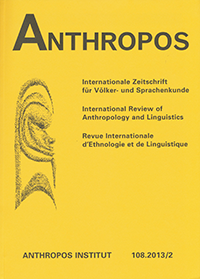
Schmidt, Bettina E. 2014. “Spirit Possession in Brazil. The Perception of the (Possessed) Body.” Anthropos 109.2014/1:135–147.
Keywords: Brazil, spirit possession, trance, candomblé, umbanda, spiritism, body concept, mediumship
Spirit possession is the core religious practice in most Afro-American religions. It is usually described as “mounting”; the spirit “rides” the body of the devotee as a horseman rides a horse. The description projects the image that a spirit takes control over the body of the medium and “uses” the human medium; the body of the person is passive and submissive, while the spirit is active and dominant. However, this view does not reflect the highly elaborate discourse about spirit possession in Brazil. The article is based on fieldwork among communities of Afro- Brazilian and Spiritist traditions in Sao Paulo, Brazil. Based on subjective narratives about bodily experience and the academic debate about body and mind, the article contributes to a wider understanding of the possession experience.
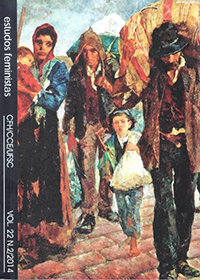
Segato, Rita Laura. 2014. “El sexo y la norma: frente estatal, patriarcado, desposesión, colonidad.” Revista Estudos Feministas 22(2):593–616.
Palavras-chave: Estado, capital, mujeres indígenas, patriarcado, sexualidad, normas, colonialidad
Paso aquí revista a los diversos efectos de la expansión e intrusión contemporáneas del frente estatal-empresarial – mediático – cristiano, siempre colonial y también para-estatal, en las comunidades indígenas del Brasil – que llamo aquí mundo-aldea – y sus consecuencias para la vida de sus mujeres. Después de este panorama, me detengo en algunos casos y ejemplos que hacen posible percibir los cambios en la mirada sobre la sexualidad y del significado y el valor dados al acceso sexual en las sociedades pre-intervención colonial y en las sociedades intervenidas por el proceso de colonización – en los países hispánicos, la sociedad criolla. La transformación del campo sexual a partir de lo que describo como la introducción de la mirada pornográfica emerge así como fulcro, eje de rotación para la mutación de un mundo en otro. Cuerpo objeto, alienado, y colonia surgen como coetáneos y afines en el nuevo orden en constante expansión. Desposesión, en este proceso, es, por lo tanto, desposesión progresiva del cuerpo y de la sexualidad.

Simião, Daniel S. 2014. “Sensibilidades jurídicas e respeito às diferenças: cultura, controle e negociação de sentidos em práticas judiciais no Brasil e em Timor-Leste (Legal sensibilities and respect for differences: culture, control and sentiments in legal practices in Brazil and East Timor).” Anuário Antropológico 39(2):237–260.
Keywords: Anthropology of law; gender; justice; gift; East Timor
The article discusses the limits of the judicialization of interpersonal conflicts facing different expectations for recognition. It questions if a mandatory protection of groups perceived as vulnerable would represent an adequate way of achieving moral demands of the subjects in conflict. It elaborates on the discussion about local forms of dispute resolution in East Timor, which are seen as opposed to formal legal processes and more receptive to moral compensation practices. Analyzing an ethnographic case with tragic consequences, the article proposes that mechanisms for hearing and repairing are not enough to ensure moral recognition. It points to the central role of compensation practices in East-Timorese forms of justice, establishing a comparative approach to the Brazilian legal sensibility and seeking to understand the limits and possibilities of community-based forms of justice.

Trnka, Susanna, and Catherine Trundle. 2014. “Competing Responsibilities: Moving Beyond Neoliberal Responsibilisation.” Anthropological Forum 24(2):136–153.
Keywords: Responsibility, Responsibilisation, Neoliberalism, Care, Social Contract
Ideas of responsibility pervade social life, underpinning forms of governance, subjectivities, and collective relations. Inspired by current analyses of neoliberal projects of ‘responsibilisation’, this paper examines modes of responsibility that extend, challenge, or co-exist with neoliberal ideals. Our aim is twofold: first, we wish to broaden current scholarly understandings of how neoliberal ‘responsible’ subjects are nested within multiple frames of dependencies, reciprocities, and obligations. Secondly, we articulate a framework for conceptualising responsibility that places responsibilisation alongside relations of care and social contract ideologies—three modes of inter-relationship that we see as underlying the ‘competing responsibilities’ inherent in contemporary social life.

Tamarkin, Noah. 2014. “Genetic Diaspora: Producing Knowledge of Genes and Jews in Rural South Africa.” (“Diáspora genética: produzir conhecimento de Genes e de Judeus na África do Sul Rural).” Cultural Anthropology (Antropologia Cultural) 29(3):552–574. http://dx.doi.org/10.14506/ca29.3.06.
Keywords: Genomics, genetic ancestry, diaspora, citizenship, race, religion, knowledge production, South Africa, Judaism, black Jews
Palavras-chave: Genómica; descendência genética; diáspora; cidadania; raça; religião; produção de conhecimento; África do Sul; Judaísmo; Judeus negros
After Lemba South Africans participated in genetic tests that aimed to demonstrate their ancient links to contemporary Jewish populations, American Jews began to visit the Lemba to connect with them on the basis of an assumed shared Judaism. Some Lemba people welcomed and endorsed these visits, but they also maintained their own ideas about the meaning of their “genetic Jewishness” and the terms of their new diasporic relationships, which often contradicted the understandings of visiting Jews. This article privileges the perspectives of Lemba South Africans, and the historical and ethnographic contexts through which Lemba genetic data emerged and circulated, to offer an alternative reading of the social and political significance of DNA. It poses the question: How do divergent genomic knowledges articulate with the politics of belonging and the pursuit of citizenship in South Africa and transnationally? I argue that DNA and diaspora converge to create new sites of political belonging, ones marked by precarious connections that balance on the production of knowledge and its refusal. I introduce the concept of genetic diaspora to theorize how these connections, marked by inequality, are tenuously forged through national, racial, and religious difference that is imagined to be the same. Genetic diaspora offers Lemba South Africans the possibility to produce and circulate their own new knowledge about Jewish history and genetic belonging. This article demonstrates that those implicated in genetic studies transform DNA into a resource that authorizes their own histories and politics of race and religion.
Depois dos sul-africanos Lemba participarem em testes genéticos que visavam demonstrar os seus laços ancestrais com as populações Judaicas contemporâneas, os Judeus americanos começaram a visitar os Lemba para se relacionarem com eles na base de um assumido Judaísmo partilhado. Alguns Lemba acolheram bem e aprovaram estas visitas, mas também mantiveram as suas próprias ideias acerca do significado do seu “Judaísmo genético” e dos termos das suas novas relações diaspóricas, que, muitas vezes, contradiziam o entendimento de visitantes Judeus. Este artigo privilegia as perspetivas dos sul-africanos Lemba e dos contextos histórico e etnográfico, através dos quais os dados genéticos dos Lemba emergiram e circularam, para oferecer uma leitura alternativa do significado social e político do ADN. Coloca-se a questão: Como é que conhecimentos genómicos divergentes se articulam com a política de pertença e da busca da cidadania na África do Sul e transnacionalmente? Eu defendo que o ADN e a diáspora convergem para criar novos espaços de pertença política, marcados por conexões precárias que contrabalançam na produção de conhecimento e na sua recusa. Introduzo o conceito de diáspora genética para teorizar como estas conexões, marcadas pela desigualdade, são tenuemente forjadas através da diferença nacional, racial e religiosa que se imagina ser a mesma. A diáspora genética oferece aos sul-africanos Lemba a possibilidade de produzir e fazer circular o seu próprio novo conhecimento sobre a história judaica e a pertença genética. Este artigo demonstra que os implicados em estudos genéticos transformam o ADN num recurso que autoriza as suas próprias histórias e política de raça e religião.
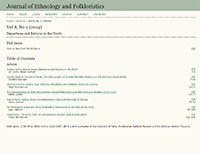
Vallikivi, Laur. 2014. “On the Edge of Space and Time: Evangelical Missionaries in the Post-Soviet Arctic.” Journal of Ethnology and Folkloristics 8(2):95–120.
Keywords: Christian missionaries; eschatology; literalism; chronotope; Nenets
Evangelical missionaries have missionised pretty much throughout Russia after the collapse of the Soviet Union. Among their favourite targets are the small-numbered indigenous groups in the Russian Arctic, where the numbers of converts are steadily growing. One particular denomination, known as the Unregistered Baptists, are among the leading agents of religious change in the North today. They are driven by the promise of the return of Christ after the gospel is preached “at the ends of the earth”. I suggest that the Baptists’ agenda is shaped, on the one hand, by the literal reading of the Bible, which allows them to be the divine instruments at the end times and, on the other hand, by the idea of Russia’s special role in God’s salvation plan. I shall analyse the Baptists’ ideas and practices, using among others Bakhtin’s concept of chronotope in order to demonstrate how powerful narratives are created and lived.
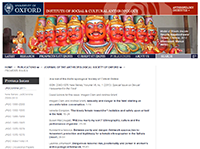
Zeitlyn, David. 2014. “Lévy Bruhl and ontological déjà vu: an appendix to Vigh and Sausdal.” Journal of the Anthropological Society of Oxford-online 6(2):213 –217.

Zondi, Nompumelelo. B., and Maria Zwane. 2014. “Perceptions of cremation as an alternative burial system among the Zulu people living in KwaZulu-Natal.” Indilinga African Journal of Indigenous Knowledge Systems 13(2):300–310..
Keywords: Perceptions, cremation, traditional beliefs, Zulu people, alternative burial system
Africa is going through a tremendous and rapid change in every respect of human life; some of these changes being circumstantial than otherwise. People are becoming increasingly detached from the corpus of their tribal traditional beliefs and practices. One of the changes pertains to cremation, an act of disposing of a deceased person’s body by burning its remains. Zulu people, a major population group in the province of KwaZulu-Natal in South Africa and a progeny of King Shaka Zulu are known to unwaveringly hold onto their cultural beliefs especially those that touch on the ‘idlozi’, living dead. HIV and AIDS pandemic in particular, have resulted in several deaths in the province calling for unconventional ways of disposing of dead bodies. A current debate on cremation as an alternative burial system at a time when municipal burial sites are increasingly becoming a scarcity thus becomes valid and critical. Municipalities are encouraging people to seriously consider cremation as an option to burial systems (Madlala, 2010:1). In light of the circumstances highlighted above, we recently undertook a study whose aim was to explore the societal views on cremation amongst people of African descent in general and with special reference to the Zulu people living in KwaZulu-Natal and who was represented by Durban’s largely populated areas (Zwane, 2011). This study was conducted in two areas; a semi-urban area represented by uMlazi and a rural area exemplified by Zwelibomvu. The researchers believed that this study was necessary as it would contribute in influencing society to review cremation for future decisions without feelings of coercion. Even though Umlazi residents are the most directly affected by burial land shortage, we thought including a rural area would also enhance the study so as to arrive at a balanced conclusion. This article, therefore reports on the findings of the study with reference to cremation as an alternative burial system amongst Zulu people.
Oba-Smidt, Chikage. 2013. “The Structure of "History" among People without Writing: An Analysis of the Boorana Oral Chronicle in Southern Ethiopia.” Japanese Journal of Cultural Anthropology 78(1):26–49.
Keywords: Perceptions, cremation, traditional beliefs, Zulu people, alternative burial system
In this paper, I describe how people without a writing tradition preserve and construct their own history, based on a research on the Oral Chronicle of the Boorana in southern Ethiopia. The Boorana has a socio-political institution based on generation sets called gadaa. It has eight generation sets. Boorana choose their leader from the 6th generation set. This leader called abbaa-gadaa bears the main responsibility for politics and ceremonies during the eight years during which he belongs to the gadaa generation set. There were 70 abba-gadaa until now according to the Oral Chronicle. Boorana can memorize all the names of the abba-gadaa of the past, and narrate events, which are said to have happened in the time of each abba-gadaa. I focus on the concept of maq-baasa, which was frequently used by narrators. Here, I describe the law of history which Boorana believe in, which can be illustrated by the discourse of the maq-baasa. The maq-baasa are the “given names” of the abba-gadaa. There are seven “given names” and each name is, in Boorana imagination, linked with a specific destiny such as conflict, disaster or peace. Seven maq-baasa names are to be given to the different abba-gadaa in a cyclical order. 3 The Boorana believe that all events happen according to the regular cycle of the maq-baasa names and the destinies linked to them, given to each abba-gadaa. I document such a way of thinking about the laws of history through an analysis of several historical narrations which mention the cycle of maq-baasa. This structure is used to construct Boorana history, which shows the important role of specific structures for memorizing history. In the conclusion, I point out three perspectives on the structure of historical memories, which Boorana use. First, there is a correlation between historical memories and the maq-baasa cycle. The maq-baasa cycle has the role not only for constructing history but also for determining which events shall be memorized or not. Second, on the other hand, the same memorizing system produces different histories, thus different versions exist among Boorana. They sometimes even create historical memories in order to apply them to the maq-baasa cycle. Third, the view on history as being controlled by the maq-baasa cycle constructs not only the history of the past, but also the present and the future. The Boorana try to foresee the future according to the laws of history. Even accidental events will thus be involved into the cyclical historical program.
